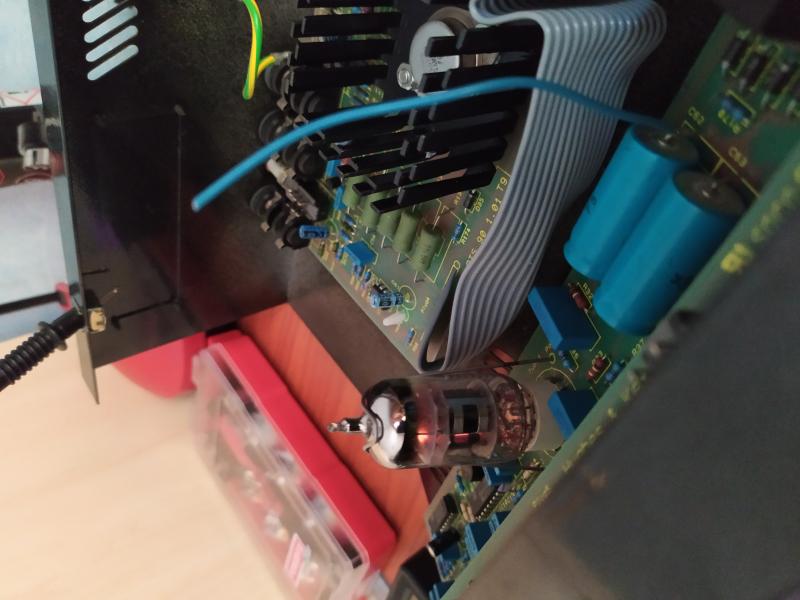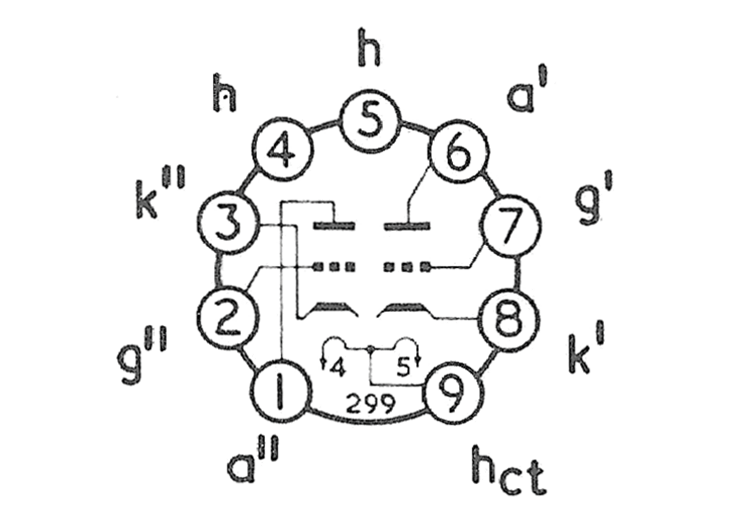Hello.
Guitar amplifier HUGHES & KETTNER ATTAX 100.
No sound.
All voltages 15v,-15v,18v,-18v,45v,-45v are ok.
No blown fuses.
If I connect my guitar on FX loop return,the sound ok,but only clean.
This Amplifier is build with one tube 12AX7A on preamp section.
How I Can veryfied this tube or control other elements.
Thank you very much.
Service manual.
HUGHES-KETTNER ATTAX 100 COMBO Service Manual download, schematics, eeprom, repair info for electronics experts
Guitar amplifier HUGHES & KETTNER ATTAX 100.
No sound.
All voltages 15v,-15v,18v,-18v,45v,-45v are ok.
No blown fuses.
If I connect my guitar on FX loop return,the sound ok,but only clean.
This Amplifier is build with one tube 12AX7A on preamp section.
How I Can veryfied this tube or control other elements.
Thank you very much.
Service manual.
HUGHES-KETTNER ATTAX 100 COMBO Service Manual download, schematics, eeprom, repair info for electronics experts
The largets part of the heat of a 12AX7 is caused by its filament. Power is current times voltage so for the filament of a 12AX7 the power (heat) is: 0.3 x 6.3 (or 0.15 x 12.6) = 1.89 Watt.
The rest of the heat is caused by anode dissipation. Looking at the schematic I think that the two triode sections together will dissipate no more than 0.3 Watt and probably even less than that.
If you feel the 12AX7 is getting warm, than it means that at least one of the two filaments is still working (each of the two triode sections of a 12AX7 has its own filament; connected for 6.3 V filament voltage, like in your amplifier, the two filaments are in parallel; so if one filament is interrupted, the other one will still be working). If one of the two filaments is not working, than no signal will be able to pass through the 12AX7.
After testing thousands of tubes, I came to the conclusion that filaments going open is very rare. But I tested mostly older tubes (from 1935 till about 1970) so I can't be sure if filament failures are also uncommon in tubes produced in more recent times.
The easiest way to find out if the 12AX7 is the cause of your problem is to try out a known good 12AX7 in its place, if you have one at hand. It is highly unlikely that you would damage that other 12AX7 by doing so.
The rest of the heat is caused by anode dissipation. Looking at the schematic I think that the two triode sections together will dissipate no more than 0.3 Watt and probably even less than that.
If you feel the 12AX7 is getting warm, than it means that at least one of the two filaments is still working (each of the two triode sections of a 12AX7 has its own filament; connected for 6.3 V filament voltage, like in your amplifier, the two filaments are in parallel; so if one filament is interrupted, the other one will still be working). If one of the two filaments is not working, than no signal will be able to pass through the 12AX7.
After testing thousands of tubes, I came to the conclusion that filaments going open is very rare. But I tested mostly older tubes (from 1935 till about 1970) so I can't be sure if filament failures are also uncommon in tubes produced in more recent times.
The easiest way to find out if the 12AX7 is the cause of your problem is to try out a known good 12AX7 in its place, if you have one at hand. It is highly unlikely that you would damage that other 12AX7 by doing so.
It’s running at high voltage 245v in the schematic so I would think it should get hot
What is the voltage on the anodes of 12ax7
Pin 1 203v
Pin 6 221v
I expect pin 1 voltage, which is a VERY cold biased triode, to be quite higher than pin 6, which is a normal biased one, this hints at second triode open or passing very little current, either of them a problem.
Start by replacing tube, for testing *any* 12A*7 will do.
If you have access to PCB bottom measure voltage between pins 4-9 and 5-9
You might have a broken trace or cracked pad solder.
Start by replacing tube, for testing *any* 12A*7 will do.
If you have access to PCB bottom measure voltage between pins 4-9 and 5-9
You might have a broken trace or cracked pad solder.
- Home
- Live Sound
- Instruments and Amps
- Hughes & Kettner Attax 100 no sound.

